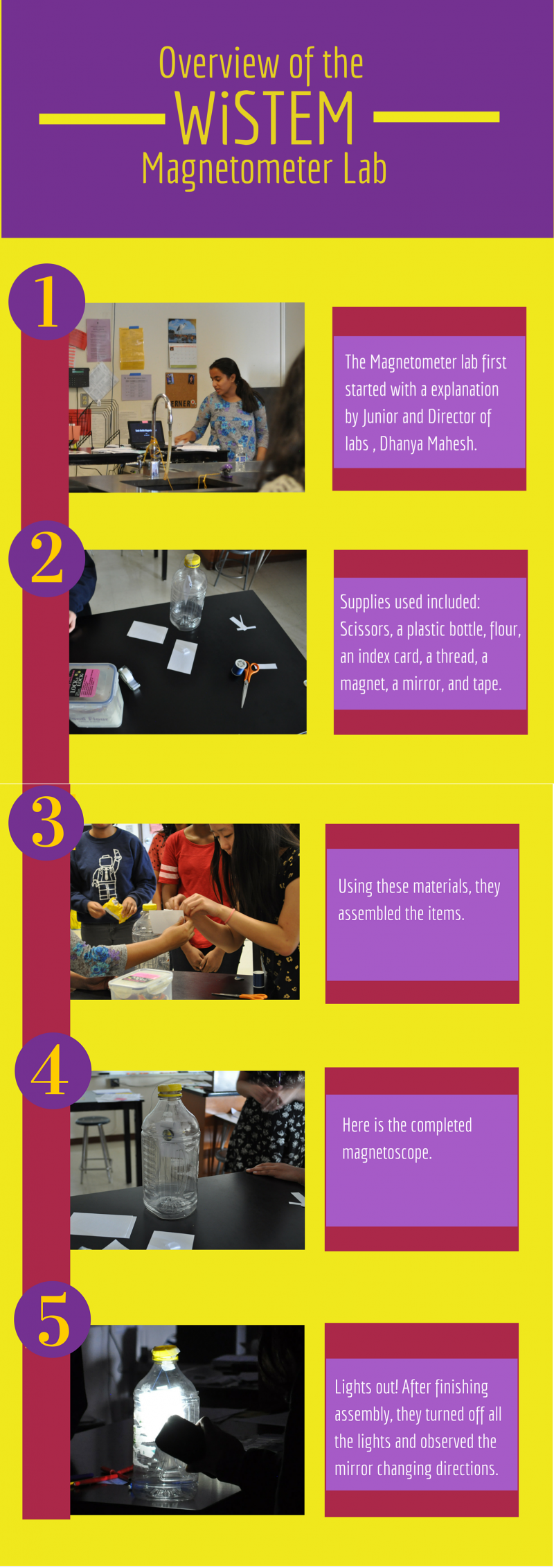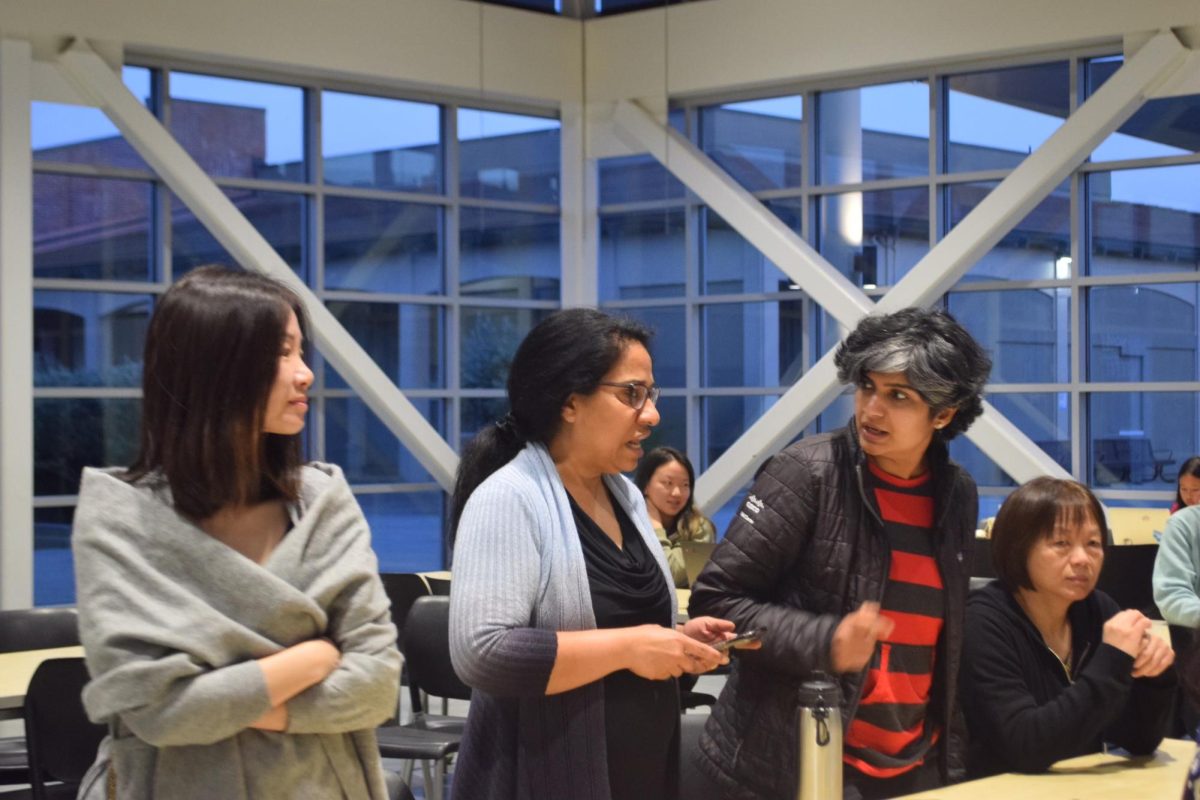The lights are turned off in room B109, and instead, the only source of illumination in the classroom is a sharp cell-phone flashlight aimed at a plastic bottle. An ensemble of aspiring female scientists gather around the shadow of the bottle. Hanging inside the bottle on a thread is an index card with a magnet taped to it. Women in STEM is conducting its first experiment: the magnetometer.
WiSTEM’s experiment involved creating a mini-magnetometer using a plastic bottle. A magnetometer is used to help indicate solar flares. When the light hits the magnet hanging from the plastic bottle, the light moves. After observing the motion of the magnet, they measure the distance between the original position and the new position.

The officers of WiSTEM chose the magnetometer demonstration for their Astronomy unit, which is part of the WiSTEM unit system. Every month, the officers of WiSTEM will choose a scientific field to base their experiments, field trips and activities on.
“This month we have astronomy, next month we might have chemistry, maybe the [month after] we have forensic science,” officer of labs and sophomore Tiffany Wang said. “We have [many] units to introduce the girls to different fields of science.”
Although the unit system first began in the middle of second semester last year, the officers decided this year to implement it to its fullest in order to bring organization to the club.
“We used to just have random labs each week, but we decided that’s not a really effective way to get into the material and get a deeper understanding and nurture interest,” vice president junior Johanna Karras said. “It’s better to have sets of labs on similar topics.”
Director of labs junior Dhanya Mahesh explained that a goal of the WiSTEM’s unit system is to help bridge the gender gap by introducing the girls to different fields of STEM that they are underrepresented in. She explains that by having scheduled units, students will be able to find specific opportunities to further their STEM-related interests in a comfortable environment.
Furthermore, the magnetometer that members of WiSTEM created was modeled after advanced NASA technology, so by conducting this experiment, students might gain an interest in pursuing a career in NASA as an astrophysicist or other astronomy related subjects.
In addition to this lab, the club is planning on taking a trip to the observatory sometime in the future, having guest speakers and conducting more labs pertaining to each unit. These labs, Wang explained, will try not be very work-heavy, as one of WiSTEM’s goals is to be more approachable to a wider audience.
“The goal of our club is for girls to actually be able to pursue stem related careers,” Karras said. “So by having a better understanding of what the careers will be like people, will become more interested and more involved or exposed.”







